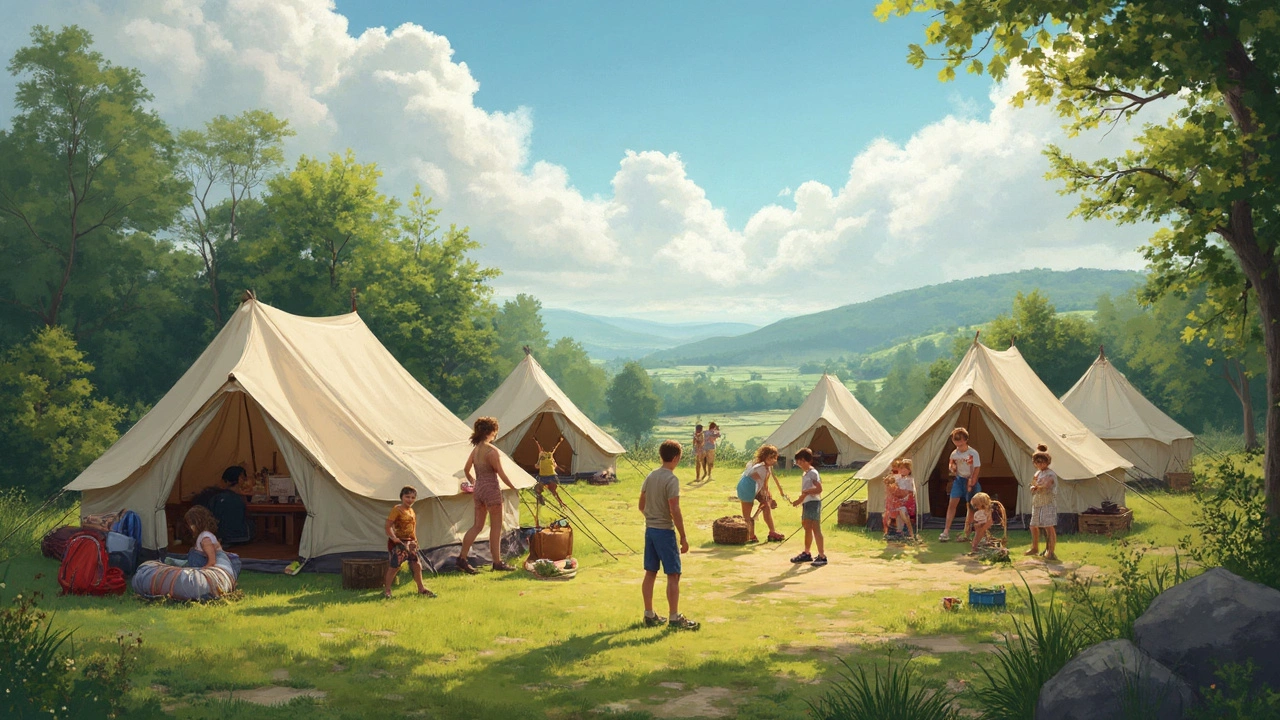Camping Risks You Need to Know Before You Pitch Your Tent
Heading out for a night under the stars sounds great, but a few hidden risks can turn fun into trouble fast. Knowing what could go wrong and how to stop it makes all the difference. Below are the most common hazards and easy steps to keep your trip safe and enjoyable.
Weather and Terrain: Don’t Let Nature Catch You Off‑Guard
Storms, strong winds, and sudden temperature drops are the biggest surprise guests at any campsite. Check the forecast the night before and pack a waterproof jacket, extra layers, and a sturdy tarp. If you’re setting up on a hill, make sure your tent is anchored well – a few guy‑lines and ground spikes can hold a tent steady even when the wind picks up.
Hilly or rocky ground can cause ankle twists or falls. Choose a flat spot, clear loose stones, and place a sleeping pad or a blanket underneath your sleeping bag. A little extra padding reduces the chance of waking up sore.
Fire Safety: Keep the Flames Friendly
Campfires are a classic part of camping, but they’re also a leading cause of wildfires. Use a dedicated fire pit if the site has one. Keep the fire small, never leave it unattended, and have water or a sand bucket nearby to smother it quickly.
If local rules ban open fires, bring a portable gas stove instead. It’s cleaner, faster, and you avoid the fire ban hassle altogether.
Remember to fully extinguish the fire before you go to sleep – stir the ashes, add water, and feel for any remaining heat. A small ember left smoldering can cause a big problem later.
Wildlife Encounters: Respect the Local Animals
Animals are curious, especially when you leave food around. Store all food in sealed containers or a locked locker, and keep cooking gear separate from sleeping gear. A simple zip‑lock bag can keep smells from attracting bears, foxes, or raccoons.
If you’re camping in an area with larger wildlife, follow local guidelines for hanging food bags high off the ground. A sturdy tree branch and a strong rope will keep critters at bay.
Health and Hygiene: Stay Fresh, Stay Healthy
Sleeping on the ground can lead to cold‑related issues if you’re not prepared. A good sleeping bag rated for the lowest night temperature you expect, plus a thermal liner, makes a huge difference.
Hand washing is key. Bring biodegradable soap and a small water container for cleaning hands after using the toilet or handling raw food. This simple habit cuts down on stomach bugs and keeps the campsite tidy.
Equipment Failures: Be Ready for the Unexpected
Rope, poles, and stakes can break, especially after a wet night. Pack a repair kit – think duct tape, spare tent stakes, and a small multi‑tool. A quick fix can save you from a soggy night.
Check your gear before you leave home. Look for tears in the tent fly, test the stove fuel, and make sure your lantern batteries are fresh. A quick inspection prevents surprises when you’re already at the site.
Navigation and Communication: Don’t Get Lost
Even if you’re on a well‑marked campsite, a lost trail marker can throw you off. Download offline maps on your phone, bring a physical map, and carry a compass. Knowing basic navigation basics means you won’t waste time wandering.
Tell someone where you’re staying and when you plan to leave. A quick text or call to a friend or family member gives peace of mind and helps rescue services if something goes wrong.
By keeping these risks in check and using simple, practical steps, you’ll spend more time enjoying the night sky and less time worrying about what could go wrong. Happy camping!
How Risky Is Camping? A Real Look at Staying Safe Outdoors
Camping with family sounds straightforward, but it’s not always a walk in the park. This article breaks down real risks at family campsites, from weather surprises to wildlife encounters. You'll get facts on what actually causes most injuries and what you can do to dodge them. With first-hand tips and surprising stats, the goal is to make your trip safe and fun. Forget scare tactics—this is your no-nonsense camping safety checklist.
